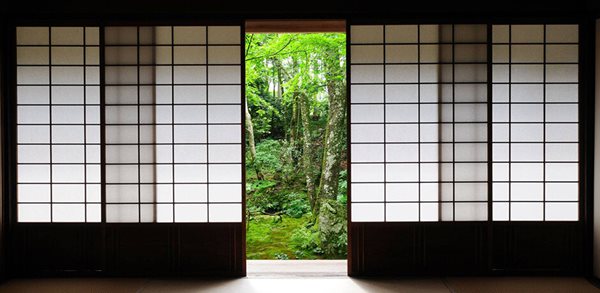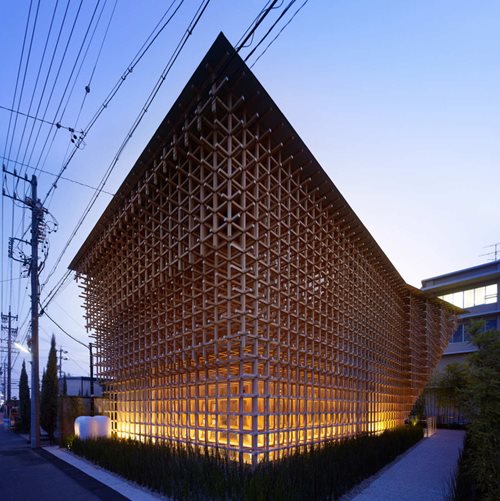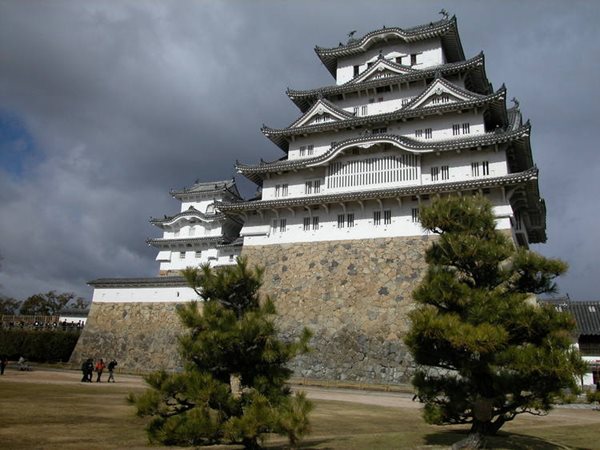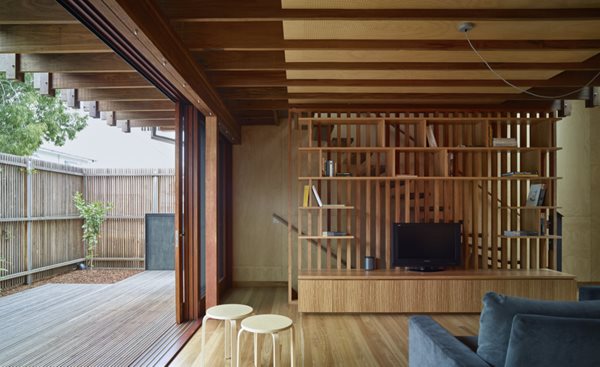Contemporary Japanese architecture is a mixture of traditional design practices and modern Western aesthetics. Universally celebrated, people around the world have embraced the Japanese aesthetic, hoping to capture a piece of it in their homes.
Let’s take a look at some of the most common elements of Japanese architecture, and some of Japan’s most celebrated buildings and architects.
The origins of Japanese architecture
Prior to the 1st century B.C.E., Japanese homes looked much like any other home across the world, consisting mainly of wood with thatched roofs and earthen floors. Built before the 6th century, some of Japan’s first shrines looked similar to ancient storehouses or homes. It wasn’t until the 7th century that Japanese architecture developed its own distinct style, having been heavily influenced by other Asian nations.
It was around this period that wood emerged as a preferred building material for Japanese architecture. This is due to a lack of stone available at the time due to volcanic activity, as well as wood’s proven resistance to earthquakes.
“Traditional Japanese architecture” typically refers to buildings built during the Edo period, which was during the 17th to mid-19th centuries. Japanese Medieval architecture was somewhat comparable to Medieval European architecture at the time due to the prevalence of castles, but it was much simpler than its European counterpart. Following this period, Japanese architecture started to adopt more Western influences.
For more information about the origins of Japanese architecture, you can watch KOCHUU, an award-winning film discussing historical Japanese buildings and the various influences that have made Japanese architecture what it is today.
Common features in traditional Japanese architecture
Wood
As mentioned, wood has traditionally been the preferred building material in Japanese architecture. In many of the older Japanese houses (as well as in some of the newer buildings) wood was left unpainted and used in its natural form in an appreciation of the grain.
Screens and sliding doors

Image credit: propertyinvestmentjapan.com
Movable screens (shoji) and sliding doors (fusuma) were used in many old Japanese houses. The screens were typically made from paper, to allow light and shadows to pass through.
Genken

Image credit: nisekoprojects.com
Common in traditional and contemporary Japanese houses, Genken refers to a small part of the floor plan where there is a sunken space between the front door and the rest of the house. This is where shoes are placed before entering.
Verandas
Older Japanese houses will usually have a wooden veranda (called an engawa) that runs around the outside of the house.
Nature
Connection to nature has always been an important feature of Japanese architecture. This can be attributed to Japan’s Shinto and Buddhist beliefs, which have had a significant influence on its architecture. This can be clearly seen in the focus on natural light and the use of raw wood as a building material, both on the exterior and in the interior.
Famous contemporary Japanese architects
Tadao Ando
Born in 1941, Ando is considered one of Japan’s best architects, despite having no formal training in architecture. His work is best-known for the creative use of natural light and concrete, as well as strong homage to the natural landscape. Some of his best-known buildings are the Asia Museum of Modern Art and the Langen Foundation in Germany.

Image credit: de.fiylo.com
Ryue Nishizawa
Tokyo-based architect Ryue Nishizawa was born in 1966, and became the youngest winner of the Pritzker Prize in 2010. He founded Tezuka Architects with his wife Yui Tezuka in 2009, and is best known for creations such as the Towada Art Centre, Teshima Art Museum and the Funabashi apartment building.
 Image credit: caddetails.com
Image credit: caddetails.com
Kengo Kuma
Born in 1954, Kengo Kuma is known for his innovative use of materials and technological advancements in his designs. An architect and professor at the Graduate School of Architecture at the University of Tokyo, his goal is to reinterpret traditional Japanese architecture for the 21st century. One of his best-known buildings is the GC Prostho Museum Research Center in Kasugai, Japan, which features an impressive system of interlocking wooden elements.

Photography by Daici Ano
Famous Japanese buildings – old and new
Yakushi-Ji Temple, Nishinokyo - built by Emperor Tenmu in 680 A.D.
 Image credit: en.japantravel.com
Image credit: en.japantravel.com
This historical temple is one of the most famous imperial and ancient Buddhist temples in Japan. Once one of the Seven Great Temples of Nanto, the temple is now the headquarters of the Hosso school of Japanese Buddhism. Part of the "Historic Monuments of Ancient Nara", the temple is a UNESCO World Heritage Site.
Himeji Castle, Himeji – built by Akamatsu Norimura in 1333, rebuilt by Akamatsu Sadanori in 1349
 Image credit: whc.unesco.org
Image credit: whc.unesco.org
The largest and most-visited castle in Japan, Himeji Castle is considered the finest surviving example of prototypical Japanese castle architecture. The castle includes a network of 83 rooms with advanced defensive systems from the feudal period. It was registered in 1993 as one of Japan's first UNESCO World Heritage Sites.
Nakagin Capsule Tower, Tokyo – designed by Kisho Kurokawa, completed in 1972
 Image credit: imgur.com
Image credit: imgur.com
Nakagin Capsule Tower is a mixed-use residentail and office tower that is considered a rare example of Japanese Metabolism, an architectural movement borne of Japan's postwar cultural resurgence. At the time it was built, it was also the world's first example of capsule architecture built for permanent, practical use.
Hoki Museum, Chiba – designed by Nikken Sekkei, completed in 2010

Photography by Noda Gankohsha
The Hoki Miseum is Japan's first museum dedicated to Realist painting. Its collections include around 480 works from emerging artists to masters of art.
Japanese architecture around the world
Japanese architecture is a popular style world-wide, considered synonymous with zen, tranquility and simplicity. This includes Australia, where an increasing amount of residential architecture is including Japanese elements.
West End House, located in inner-city Brisbane, is a prime example of the uptake of Japanese architecture in Australia.


Photography by Scott Burrows
Japanese-Australian architect Koichi Takada also continues to alter our skylines, bringing a Japanese feel to some of our new developments rather than focusing on a particular "look". This can be seen in Mastery, currently under construction in Waterloo, where there is a focus on human connection and the use of natural materials such as timber and stone.


